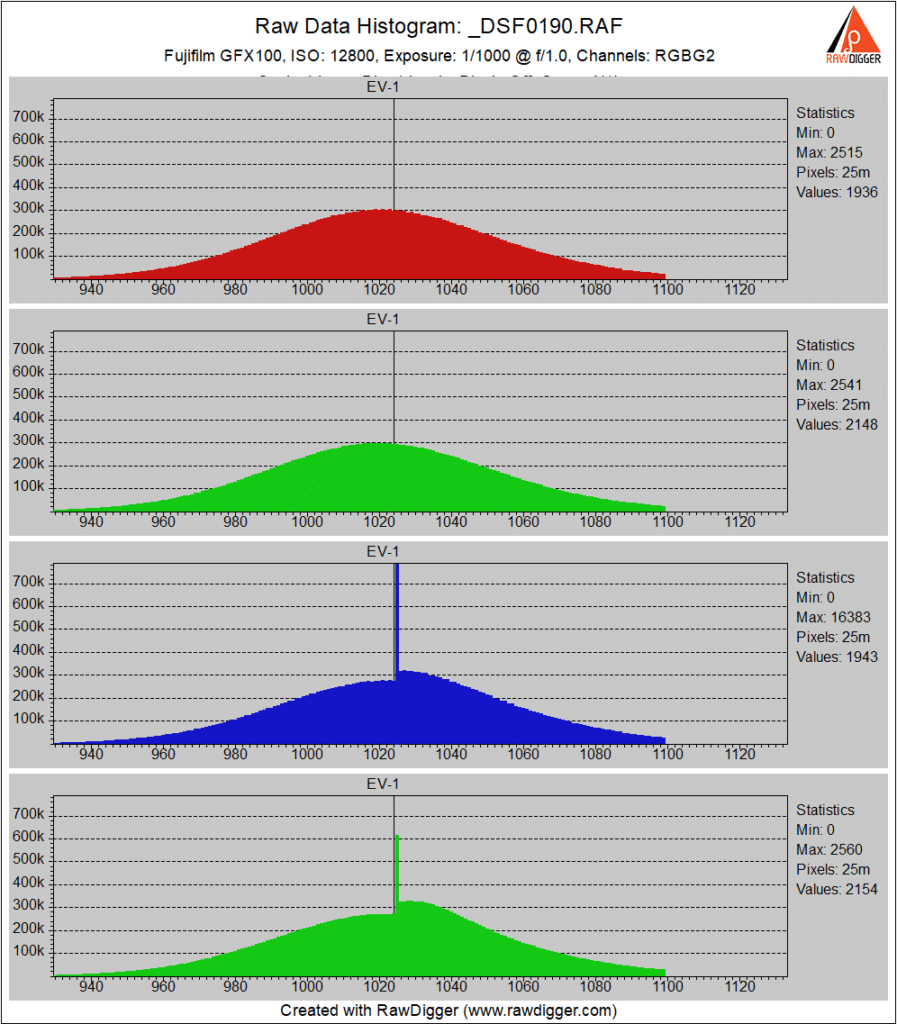This is one in a series of posts on the Fujifilm GFX 100. You should be able to find all the posts about that camera in the Category List on the right sidebar, below the Articles widget. There’s a drop-down menu there that you can use to get to all the posts in this series; just look for “GFX 100”.
When I was contemplating the series of posts about the GFX 100, I had many questions. I now have answers to some of them.
- Is it too heavy for extended handheld use?
It’s definitely heavier than the GFX 50R, and even the GFX 50S, but it’s not bad for extended handheld use with most lenses. Forget about it with the 250, but that’s too heavy for me with the 50x cameras.
- Does the grip work for verticals?
Works fine for short periods. I don’t shoot verticals for long periods.
- What are the details of the dual-conversion gain (aka DR-Pix, aka the Aptina trick) implementation?
Pretty much the same as in the Phase One IQ4 150MP. The transition to high conversion gain occurs as you switch from ISO 400 to ISO 500.
- What do the shadow SNR curves look like? Are they basically the same as a 44×33 crop of the Phase One 150 MP camera?
Pretty much.
- Does the PDAF cause striping like it does in the a7x cameras?
No, but there’s PDAF banding.
- Have Fuji done a ham-handed PDAF striping fix that is a cure worse than the disease, like Nikon did with the Zx?
Yes, and it’s even worse than the Nikon “cure”.
- For which native lenses is the extra resolution not a big win? I’m guessing only for the 100-200/5.6, or maybe the 250 with the 1.4x TC attached.
It’s certainly a big win for the 110. I’ll be testing the others.
- How much AF accuracy — if any — has Fuji given up with their PDAF implementation?
Hardly any.
- What is Fuji’s diaphragm-control strategy during autofocus, and how does it interact with the focus shift that occurs in some of the native lenses? By the way, short of lens-dependent strategies, I consider the Z7 aperture-control strategy to be the current state of the art.
I haven’t figured out the strategy yet, but focus shift is not calibrated out with the 110/2.
- Does the diaphragm control during manual focusing with native lenses work the same was with the GFX 100 as with the 50S and 50R?
Yes. Assign that function to a button on the front of the camera.
- Will I miss the 50x dials?
Yes, indeed. But a bigger usability issue is that the user interface is just so different from the GFX 50R and GFX 50S, which were themselves different from each other. Going back and forth among all three cameras, as I do, is confusing.
- How good is the EVF?
Excellent.
- How good is the peaking, and how accurate and fast is manual focusing? Is peaking still only based on horizontal differences?
The GFX 50x had three levels of peaking sensitivity. The GFX 100 cuts that back to two. That’s a loss. Otherwise, about the same.
- How fast is the new PDAF? How controllable?
Definitely faster than the CDAF in the GFX 50x. Not a patch on a modern full frame MILC like the Z7 or a7RIII.
- What’s the silent shutter scan time?
1/3 second for 16-bit precision, and 1/6 second for 14-bit.
- When does Fuji throw in the towel on analog gain’s relationship to ISO setting and just change the metadata and let the raw developer sort it out? I consider the current GFX 50x behavior to be the best out there.
Sad to say, the GFX 100 doesn’t follow the path set by the GFX 50x. It uses conventional analog gain through ISO 12800. There is some wierdness in two of the planes that relates to the PDAF issues of the camera:
- Does Fuji ever use — shudder — digital gain?
Fuji uses digital gain above ISO 12800.
- Under what conditions does the camera apply spatial filtering?
I’ve found none.
- Does having more resolution significantly reduce the — already small, IMHO — effect of distortion correction?
Yes, although I’ve not done a formal test.
- Are there thermal problems associated with the higher processing requirements of the higher-resolution, faster sensor?
None that I’ve seen.
- Is using the camera with full-frame lenses more of a win over the Zx and A7Rx cameras now that we have finer pixel pitch than those cameras?
Yes. But the point is about to be rendered moot with the introduction of the a7RIV, so I haven’t posted any comparisons, and don’t intend to.
- How much does IBIS help with different lenses?
Coming. I’ve put this off because this is a test I hate to perform.
- Does Fuji lock down the sensor when IBIS is turned off? If not, does this cause any problems?
I can see no evidence that they do. Take care when cleaning the sensor.
- Does Fuji use the same 1/500s limit for EFCS?
No.
- Are there visible differences between 14-bit and 16-bit GFX 100 files?
At base ISO there are, but they are miniscule.

Leave a Reply